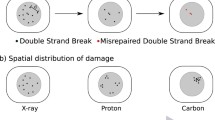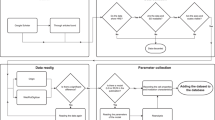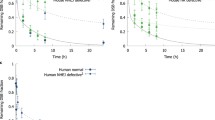At present micronucleus data cannot predict cellular radiosensitivity. The inclusion of data from apoptosis and abnormal morphology has not entirely resolved this problem. Here, we assess the probability of cell death arising from events other than micronucleation, apoptosis and abnormal morphology (i.e. lesions not detected by these damage assays) P oe, for its ability to reflect intrinsic cellular radiosensitivity. Analysis of data from 17 cell lines used in two separate studies, spanning a wide range of radiosensitivity (0.09≤SF2≤0.70), confirmed our previous observation that cell death due to undetected lesions depends on the irradiation dose and is cell type-specific. We further demonstrate that P oe accounts for inter-cell line differences in translating irradiation damage into cell death. Data from any two of micronucleus formation, apoptosis and abnormal cell morphology, fitted to the P oe model, adequately predict clonogenic survival, and measurement of additional damage endpoints is not required. The P oe model may benefit patient selection in situations where colony formation of primary tumour cultures fails to arrive at estimates of radiosensitivity.
Similar content being viewed by others
Author information
Authors and Affiliations
Additional information
Electronic Publication
Rights and permissions
About this article
Cite this article
Akudugu, J., Abend, M. & Böhm, L. A unifying model for reconstructing radiosensitivity from micronucleus formation, apoptosis and abnormal morphology. Radiat Environ Biophys 41, 267–274 (2002). https://doi.org/10.1007/s00411-002-0176-1
Received:
Accepted:
Issue Date:
DOI: https://doi.org/10.1007/s00411-002-0176-1




